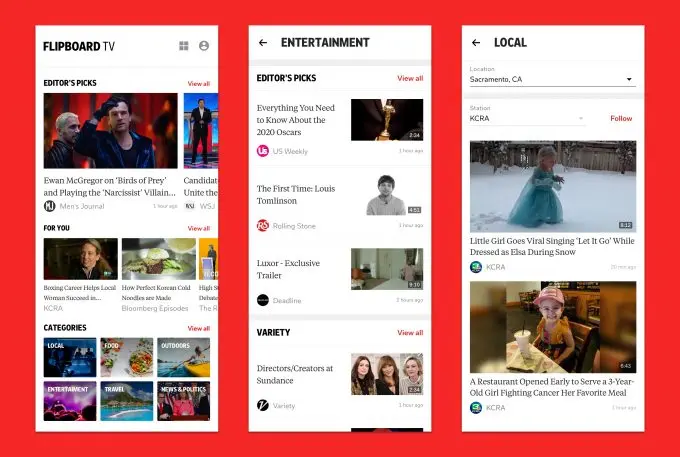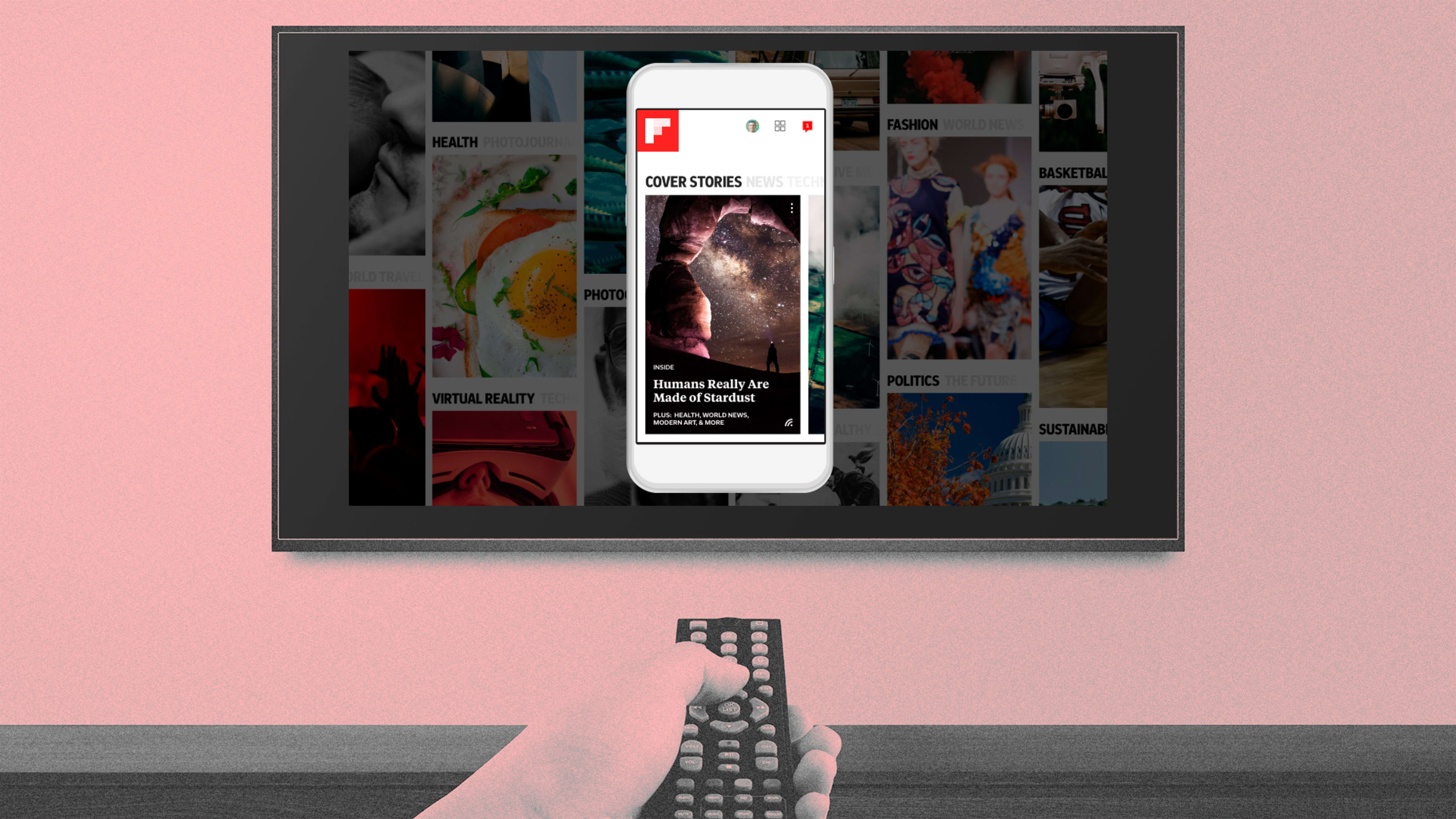In July, Flipboard will turn 10. The app has evolved a lot over its first decade: It started out as an early killer app for the then-new iPad but is now most popular on smartphones. All along, however, it’s focused on being a personalized magazine—a customizable, digital upgrade to reading in its traditional dead-tree form.
Video—such as embedded YouTube—has long been an element of the Flipboard experience too; it’s just been more of a sideline than a primary attraction. But now the app is adding a new feature, Flipboard TV, that aims to be . . . well, pretty much Flipboard for video. It’s highly curated, with an attractive interface, and designed to let people delve into the topics they care about, all in one place inside a new tab in the app.
Along with giving Flipboard fans more stuff to peruse, Flipboard TV introduces a new twist for the company’s business model. In the past, the app has let you log into accounts for media outlets such as the New York Times to view paywalled content. But Flipboard TV marks the first time Flipboard has charged for something itself: The service will cost $2.99 a month. It’s launching as a preinstalled exclusive for Samsung’s new Galaxy S20 phones, due to arrive on March 6. Later on, it will roll out in Flipboard’s apps for other Android phones, iPhones, and iPads.
Pick your passions
Like the rest of Flipboard, Flipboard TV is organized around subjects, from hard news to hobbies. “If you’re a surfer, you can watch surfing video,” says Flipboard cofounder and CEO Mike McCue. “If you love mountain biking, you can find mountain biking. If you’re really into entrepreneurialism, you can find interviews with founders. We want to get deep video for people’s passions and interests. We’re obviously not focused on TV and films. It’s not user-generated video. It’s really high-quality, professionally produced video from all of our partners.”
Those partners—who will share a cut of Flipboard’s subscription revenue—include 100-plus media outlets, including such big names as the Wall Street Journal, MarketWatch, Barrons, Bloomberg, Rolling Stone, Variety, Deadline, Muscle and Fitness, and (here you go, surfers and mountain bikers) Surfer and Bike. Also onboard are TV news operations from Des Moines, Orlando, and Sacramento—local news being another new Flipboard initiative. Feeds feature videos chosen through a mix of editorial selection and AI—unique to each user—or you can follow specific publications.

“We’re providing some optimization to get the videos to load quickly,” says McCue. “That’s obviously a really key part of the experience. And by the way, you’d be amazed, just ads alone slow everything down.”
Elsewhere on Flipboard, vast amounts of curation has long been handled by the app’s users, who can create their own magazines on any subject and then flip articles into them. That crowd-editing has become so core to the whole concept that I asked McCue if users would be able to do something similar with the new video content. Not in the initial release, he told me. “But very quickly after, you’ll be able to curate all these videos into magazines.”
Recognize your brand’s excellence by applying to this year’s Brands That Matter Awards before the early-rate deadline, May 3.
